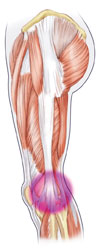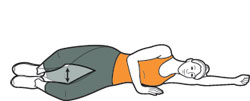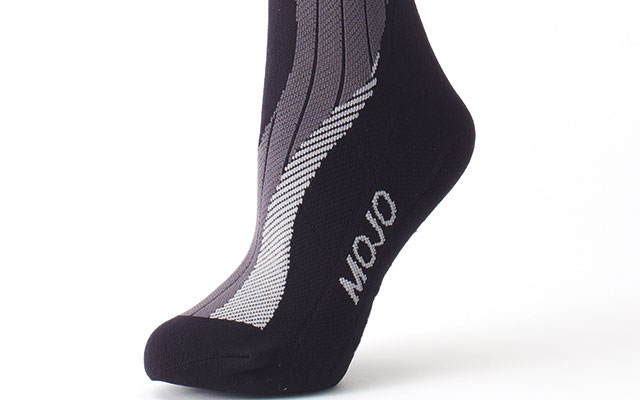Gym Funk
Q1: Dude, my workout buddy reeks. Why do some people smell and some don’t?
A: Every person’s unique scent is a combination of genetics, stress, dirt, diet and health status. A hard workout will just showcase whatever it is you’ve got goin’ on. Sweat contains steroid compounds called 16-androstenes, and the more of them your sweat contains, the stronger your personal aroma. Two of the 16-androstenes compounds are particularly pungent: A predominance of androstenol will give you a musky odor; androstenone, on the other hand, makes you smell like pee, says Jane Alexander, author of The Holistic Therapy File. Bacteria that live on skin thrive in sweaty situations and further contribute to body odor.
Frequent showers are your best bet to minimize these factors in the short term, but lifestyle and diet matter, too. Stress spikes sour-smelling adrenaline; garlic and curry tend to make their way out through pores; smokers and sick people often smell acrid. (Interestingly, women are better than men at detecting body odor masked with perfume or deodorant.)
Drink plenty of water to flush your system. Alexander also suggests having a small carb snack (like an apple) before exercise — avoiding carbs completely can exacerbate smelly sweat. And she recommends trying Body Mint Sport (www.bodymintsport.com), a tablet made of a derivative of chlorophyll that promises to “mop up odor from within.”
Ramping Up Resting Metabolic Rate
Q2: I recently got my resting metabolic rate tested, and it is really low. I already eat well — my diet consists of whole, clean foods and I don’t overeat — so how can I up my metabolism through exercise?
A: Good for you for consuming whole, clean foods, because toxins from pesticides, antibiotics, hormones, processed sugars and trans fats can be interpreted by the body as stress, raising cortisol levels, affecting thyroid activity and slowing metabolism, says Kristin Lynch, CPT, metabolic specialist at Life Time Fitness in Plymouth, Minn. In terms of increasing metabolism through exercise, the goal is to build fitness and muscle while also burning max calories — both during and after exercise.
So, up the intensity and duration of your workout — and resistance training is a must, says Mark Young, exercise and nutrition consultant and founder of Mark Young Training Systems. In fact, both Young and Lynch emphasize resistance training, but suggest different ways of going about it. To meet the goal of packing on muscle that will burn more calories at rest, Young recommends a hypertrophy-based program, which tends to include muscle-isolation exercises along with more full-body movements such as squats, dead lifts and push presses. “Using rep ranges as low as five reps and as high as 20 could be warranted, as long as the total number of reps per muscle group is between 30 and 60 per workout,” says Young. “I’d alternate upper- and lower-body workouts for a total of three to four per week, depending on recovery. And do longer, intense bouts of cardio on one or two of the days you’re not lifting.”
Although adding isolation to a full-body program is a direct path toward increasing muscle mass, split-body programs can be time consuming and a titch boring. If you prefer (and I do), you can follow Lynch’s advice of focusing solely on total-body exercises using challenging weight. She also suggests circuit training as another metabolism booster, noting that proper hydration and quality sleep will nudge your resting metabolism upward. (For options, see “Stair Mastery” and “Making the Rounds.”)
Exercise on a Detox
Q3: I want to do a 10-day detox, but I’m loath to go that many days without working out. Any way around that rule?
A: Sure is! The standard advice is to take it easy when you’re doing a detox, but that doesn’t mean you have to give up exercise entirely — especially if you’re doing a sane, sensible detox that doesn’t completely eradicate your ability to navigate daily life.
Alexander (who talked sweat with me earlier) calls rebounding on a mini-trampoline “superb” (she’s British) because it stimulates the lymphatic system. She ranks light swimming, cycling and yoga high on her list of detox-compatible activities.
Or, if you’re feeling energetic, do more — it’s really about being mindful of your own energy levels. “I advise my patients to stay at whatever is their current level of exercise intensity when they do a detox or cleanse program,” says Beverly Yates, ND, director of the Naturopathic Family Health Clinic in Mill Valley, Calif. “It’s just not the time to kick off an intensive triathlon-training program or the like — don’t ask your body to do extra.” (Note: I’ve found that adding a little more protein than detox diets typically specify helps keep me from lying on the floor weeping after detox workouts.)
The key is to tune in to your body — make sure you’re not getting short of breath or feeling dizzy or nauseated. “Let your body tell you what it needs rather than imposing rigid rules from your mind,” says Dawn Hamilton, PhD, blogger at www.dawnhamilton.com and coauthor of Super Energy Detox: 21-Day Plan With 60 Allergy-Free Recipes (Thorsons, 2002). “While interruptions from your workout routine are a drag, the benefits of a good detox are worth it — you’ll probably find that you return to the gym with more energy and strength than you had before.
Fitness Fixes: IT Band Solutions
That mysterious knee pain that’s ruining your workout may be from overly tight iliotibial bands.

Your iliotibial (IT) bands are thick lengths of connective tissue that run from each hip to the outside of the tibia (shin bone) just below the knee; they steady the femur and stabilize your knee joint. Every time you flex and extend your knee, they glide over a knob of knee bone called the lateral epicondyle and its neighboring bursa sac. When IT bands tighten up, however, they don’t so much glide as hiccup over that bump, causing pain on the outside of the knee that may radiate up to the hip.
This condition is known as iliotibial band syndrome (ITBS), and its causes range from repetitive activity to various biomechanical abnormalities, explains Debbie English, PT, physical therapist at Sports Center Physical Therapy in Austin, Texas. Weakness of the muscles that attach to the IT bands — often the glutes, but also the hamstrings and quads — can contribute to the problem.
Treatment usually consists of foam rolling and massaging the IT bands and muscles that attach to them. “Strengthening the hips and glutes can also prevent undue biomechanical stress on the IT bands,” says Phil Malloy, PT, a physical therapist at Athletico in Chicago. In addition, he suggests having your gait analyzed to address specific areas of tightness and weakness.
A physical therapist can diagnose ITBS using specific tests, but almost everyone could stand to loosen up their IT bands. So, do the following two exercises for three sets of 10 to 15 reps three times a week. Malloy says you should notice a difference in approximately four to six weeks.
IT Band Foam Roll

• Lie on your side with the foam roller positioned perpendicular to your bottom leg, just below your hipbone. Position your upper leg in front of you for balance.
• Using your hands for support, roll from the top of your outer thigh down to just above your knee, straightening your front leg as you go. Pause over any spots where the tissue feels especially tight or knotted, and hold for at least 10 seconds. Reverse the motion, rolling from your knee back up to your hip. Repeat on your other leg.
Side-Lying Clams

• Lie on one side, flexing your hips to 30 degrees and your knees to 90 degrees.
• Keeping your heels touching and pelvis perfectly still (this is important!), lift your top knee slightly by contracting your glutes.
• Repeat the movement slowly 10 to 15 times before switching side




This Post Has 0 Comments